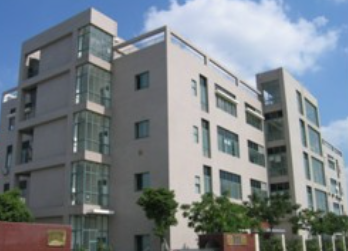
活性烯烃和醛在三级胺(如 DABCO = 1,4-Diazabicyclo[2.2.2]octane)的催化下发生的偶联反应被称为Baylis-Hillman 反应。膦也可以用于此反应,如果胺或膦是手性的,则发生非对映选择性的Baylis-Hillman 反应。


碱催化下吸电子基团活化的烯烃和一些亲电子化合物(如醛)偶联得到非常有用的有机合成中间体。当以三级胺作为碱时,特别是以1,4-二氮杂二环[2.2.2]辛烷( DABCO = 1,4-Diazabicyclo[2.2.2]octane)此反应被称为Baylis-Hillman反应。1972年Baylis和Hillman首先报道了α,β-不饱和酯,腈,酰胺和酮与各种醛类化合物进行反应。现在用此反应可以合成各种化合物(吸电子基团可以是磺酰基,膦酰基等,亲电子化合物也不仅仅是醛)。此反应的一个缺点就是反应速率比较慢,经常需要延长反应时间。现在也发展了好多加快反应速率的方法,如加入膦盐,加入 Lewis酸,加压,超声和微波等方法。
反应机理:
此反应的关键步骤是胺催化剂加成到活性烯烃上形成稳定的亲核阴离子。此亲核阴离子加成到醛上,随后胺催化剂消除得到产物。

其他的氮亲核阴离子也可以参与此反应,如在一些反应中DMAP和DBU比DABCO的效果还好:

对于芳香醛在极性,非极性和质子性溶剂条件下,都确定了反应的速度决定步骤首先是DABCO和丙烯酸酯的加成,而后是和醛的反应。基于反应速率数据,Tyler McQuade 最近提出 (J. Org. Chem. 2005, 70, 3980.DOI),以下有半缩醛参与反应的机理。

反应实例:

Octanol-Accelerated Baylis-Hillman Reaction
K.-S. Park, J. Kim, H. Choo, Y. Chong, Synlett, 2007, 395-398.

The First One-Pot Synthesis of Morita-Baylis-Hillman Adducts Starting Directly from Alcohols
L. D. S. Yadav, V. P. Srivasta, R. Patel, Synlett, 2010, 1047-1050.
Dramatic Rate Acceleration of the Baylis-Hillman Reaction in Homogeneous Medium in the Presence of Water
J. Cai, Z. Zhou, G. Zhao, C. Tang, Org. Lett., 2002, 4, 4723-4725.

Synthesis of 1,3-Dialkyl-1,2,3-triazolium Ionic Liquids and Their Applications to the Baylis-Hillman Reaction
Y. Jeong, J.-S. Ryu, J. Org. Chem., 2010, 75, 4183-4191.

Sila-Morita-Baylis-Hillman Reaction of Arylvinyl Ketones: Overcoming the Dimerization Problem
A. Trofimov, V. Gevorgyan, Org. Lett., 2009, 11, 253-255.

A Highly Active and Selective Catalyst System for the Baylis-Hillman Reaction
J. You, J. Xu, J. G. Verkade, Angew. Chem. Int. Ed., 2003, 41, 5054-5066.

Traditional Morita-Baylis-Hillman reaction of aldehydes with methyl vinyl ketone co-catalyzed by triphenylphosphine and nitrophenol
M. Shi, Y.-H. Liu, Org. Biomol. Chem., 2006, 4, 1468-1470.

Succesful Baylis Hillman Reaction of Acrylamide with Aromatic Aldehydes
C. Yu, L. Hu, J. Org. Chem., 2002, 67, 219-223.

Ionic Liquid-Immobilized Quinuclidine-Catalyzed Morita-Baylis-Hillman Reactions
X. Mi, S. Luo, J.-P. Cheng, J. Org. Chem., 2005, 70, 2338-2341.

Guanidine-Catalyzed γ-Selective Morita-Baylis-Hillman Reactions on α,γ-Dialkyl-Allenoates: Access to Densely Substituted Heterocycles
P. Selig, A. Turočkin, W. Raven, Synlett, 2013, 24, 2535-2539.

A Practical Preparation of 2-Hydroxymethyl-2-cyclopenten-1-one by Morita-Baylis-Hillman Reaction
H. Ito, Y. Takenaka, S. Fukunishi, K. Iguchi, Synthesis, 2005, 3035-3038.

Acceleration of the Morita-Baylis-Hillman Reaction by a Simple Mixed Catalyst System
A. Bugarin, B. T. Connell, J. Org. Chem., 2009, 74, 4638-4641.

Asymmetric Morita-Baylis-Hillman Reactions Catalyzed by Chiral Brønsted Acids
N. T. McDougal, S. E. Schaus, J. Am. Chem. Soc., 2003, 125, 12094-12095.

MgI2-accelerated enantioselective Morita-Baylis-Hillman reactions of cyclopentenone utilizing a chiral DMAP catalyst
A. Bugarin, B. T. Connell, Chem. Commun., 2010, 46, 2644-2646.

Catalytic Asymmetric Aza-Morita-Baylis-Hillman Reaction of Methyl Acrylate: Role of a Bifunctional La(O-iPr)3/Linked-BINOL Complex
T. Yukawa, B. Seelig, Y. Xu, H. Morimoto, Y. Xu, H. Morimoto, S. Matsunaga, A. Berkessel, M. Shibasaki, J. Am. Chem. Soc., 2010, 132, 11988-11992.

Chiral Bifunctional Organocatalysts in Asymmetric Aza-Morita-Baylis-Hillman Reactions of Ethyl (Arylimino)acetates with Methyl Vinyl Ketone and Ethyl Vinyl Ketone
M. Shi, G.-N. Ma, J. Gao, J. Org. Chem., 2007, 72, 9779-9781.

A Brønsted Acid and Lewis Base Organocatalyst for the Aza-Morita-Baylis-Hillman Reaction
K. Matsui, S. Takizawa, H. Sasai, Synlett, 2006, 761-765.

Organocatalytic Tandem Three-Component Reaction of Imine, Alkyl Vinyl Ketone, and Imide via aza-Baylis-Hillman Reaction
S.-e. Syu, Y.-T. Lee, Y.-J. Jang, W. Lin, J. Org. Chem., 2011, 76, 2888-2891.

Organocatalysis of the Morita-Baylis-Hillman Alkylation Using Trialkylphosphines
M. E. Krafft, K. A. Seibert, Synlett, 2006, 3334-3336.
General procedure[Johnson C. L. et al. Tetrahedron Lett. 2004,45 7359]

Benzaldehyde (5 mmol) and methyl acrylate (5.5 mmol)were added to a round-bottomed flask containing the phosphonium salt (0.5 mmol)and DBACO (2.5 mmol). The flask was stoppered and the mixture was stirred atroom temperature for 24 h. the mixture was diluted with DCM (10mL) and washedsuccessively with aq. HCl (2M) and water. The organic phase was dried andconcentrated. The residue was purified by flash chromatography (ethyl acetate/hexane, 1:3) to give methyl 3-hydroxy-2-methylidene-3-phenylpropionate.







